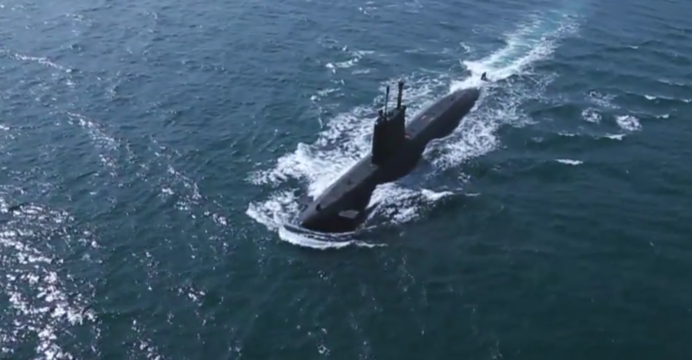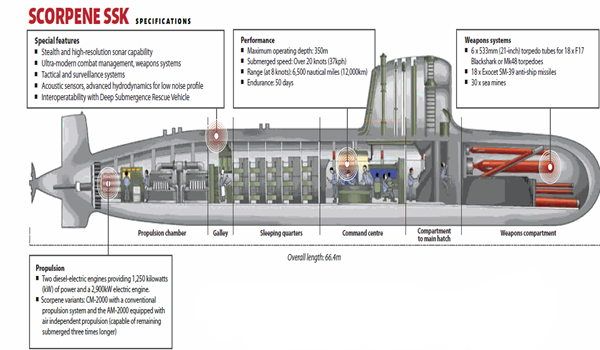Maintaining a submarine is not the same as how you maintain your tricycle.
LMAO.
DCNS has already clarified the truth.
Star wars

Beat it nerd
Oh so you are satisfying your self
The revelation Aug. 24 by an Australian newspaper that thousands of pages of presumably secret submarine documents were on the loose shook governments in Canberra, New Delhi and Paris. The news threatened the operational security of India’s new Scorpene-class submarines, embarrassed French shipbuilder DCNS, and raised security questions about
Australia’s recent Australian $50 billion deal with DCNS for 12 Shortfin Barracuda submarines, of a design similar to the Scorpenes.
As reported by The Australian newspaper, a reporter was shown samples of
up to 24,500 pages of highly technical data on the Scorpene submarine, an advanced, non-nuclear design that has been exported by DCNS to several countries. The documents, said The Australian, include highly technical drawings, specifications and operational capability descriptions of the submarine’s stealth features; noise signatures at different speeds; range, endurance, diving depths, magnetic and infrared data.
The information, The Australian reported, would be considered classified and highly sensitive by any navy.
Initially, there were fears that some sort of Wikileaks-like situation had occurred, or that this was a case of industrial espionage. But on Aug. 27, The Weekend Australian reported it seemed to be more a story of a disgruntled employee who initially stole the data, followed by mishandling of the information by a contractor. The story, the publication said, seemed to be “more Austin Powers than James Bond.”
Initially, said The Weekend Australian, it’s believed a French subcontractor copied the data from DCNS in France in 2011, and it was taken to “a Southeast Asian country” – reported by Reuters to be India. After a fallout with his employer, the subcontractor was terminated, but the data was left on a company computer. The information was then sent to the company’s head office in Singapore, and in April 2013 the data was placed on a server. It is not clear, The Weekend Australian said, how long the data resided on the server or whether any foreign intelligence service obtained the data.
But the complete data package was copied to a disk, dropped in the mail, and sent to an unspecified person in Sydney, Australia who, realizing the significance, copied it to an encrypted disk, destroyed the original and stored it in a locked filing cabinet for more than two years.
More recently, The Weekend Australian reported, the man showed samples of the data to a reporter while meeting in a Melbourne suburb. The man, the publication said, called himself a whistleblower and wanted to demonstrate that a serious security breach existed in a dangerously uncontrolled form, and that France has already lost control of secret data on India’s submarines.
His hope, The Weekend Australian said, was to spur Australia and DCNS to step up security to ensure Australia’s submarine program doesn’t suffer the same fate.
The Australian government tried to play down the story.
“All leaks of classified information like that are of concern,” Prime Minister Malcolm Turnbull told Channel Seven. “The submarine they are building for India is not the submarine we will be building for Australia. It is a completely different model, a different submarine. The information is some years old now.”
Australia recently announced a new comprehensive cyber strategy, Turnbull said.
“We have the highest security protections on all of our defense information, whether it is in partnership with other countries or entirely within Australia,” he told Channel Seven. “But clearly it is a reminder that, particularly in this digital world, cyber security is of critical importance.”
In New Delhi, Indian Defense Minister Manohar Parrikar asked the Indian Navy to deliver a report on the leak within one month, according to a senior official with the Indian Ministry of Defense.
The first of six Indian Scorpene submarines, the Kalvari, was launched in October at Mazagon Dock Ltd., in Mumbai. DCNS and India are working under a $3.5 billion deal signed in 2005.
The Indian Navy, in an Aug. 25 statement, tried to downplay the leak.
“The documents that have been posted on the website by an Australian news agency have been examined and do not pose any security compromise as the vital parameters have been blacked out,” the Indian Navy said.
The Navy added it “has taken up the matter with the Director General of Armament of the French Government expressing concern over this incident, and has requested the French Government to investigate this incident with urgency and share their findings with the Indian side.”
Retired Indian Navy admiral and former service chief Arun Prakash said the leak has "badly" compromised the credibility of DCNS.
In Paris,
DCNS would not comment directly on the data.
“DCNS has been made aware of articles published in the Australian press related to the leakage of sensitive data about (the) Indian Scorpene,” the company told Defense News on Aug. 23.
“This serious matter is being thoroughly investigated by the ... French national authorities for defense security,” DCNS said. “This investigation will determine the exact nature of the leaked documents, the potential damages to DCNS customers as well as the responsibilities for this leakage.”
The Scorpene leak sparked close coverage in the French media. Conservative daily Le Figaro placed the Scorpene story on its internet subscribers service, such was the high value attached to the topic.
Left wing daily Libération pointed up the weak resources assigned by the French external and internal intelligence agencies to help industry with economic intelligence, as respectively DGSE and DGSI are focused on anti-terrorism.
A French government official said the DCNS documents had been stolen in 2011, not leaked, with the perpetrator a former French employee who had been fired while providing training in India, Reuters reported. There was no negligence from DCNS but there has been "some dishonesty by an individual."













